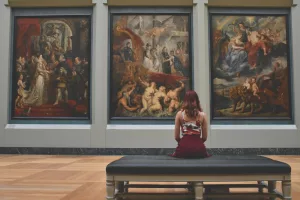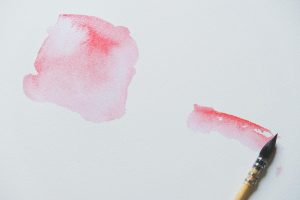Capturing movement in art is a delightful challenge that brings static images to life, filling them with energy and emotion. To master this art form, artists tap into a range of techniques, each offering unique ways to convey dynamism. Let’s delve deeper into these methods, providing both budding and seasoned artists with actionable insights to enhance their craft.
Gesture Drawing: The Foundation of Movement
Gesture drawing remains a cornerstone technique for capturing movement. It’s about embracing the essence of the subject rather than fixating on details. Imagine sketching a dancer mid-spin; the goal is to capture the fluidity of motion, not every fold of the costume.
Practical Tips for Gesture Drawing:
- Time Constraints: Set a timer for 30 seconds to 2 minutes. Rapid sketches force you to focus on motion rather than detail. This approach can be daunting at first, but over time, it sharpens your ability to capture the essence of movement quickly.
- Materials: Use soft pencils or charcoal, allowing for swift, sweeping lines that convey energy. Consider using newsprint paper, which is inexpensive and perfect for quick sketches.
- Observation: Study people in motion—at a park or café—and practice capturing their gestures quickly. A great exercise is to watch sports or dance videos, pausing at different frames to practice capturing those fleeting moments.
Dynamic Poses: Infusing Energy and Expression
The choice of pose can dramatically enhance the perception of movement. Dynamic poses, with their exaggerated angles and tension, are instrumental in conveying motion.
How to Create Dynamic Poses:
- Body Language: Analyze sports photography or dance performances. Notice how a tilted torso or bent knee adds tension. For example, a sprinter at the starting block, with muscles taut and ready to burst into action, tells a story of impending movement.
- Experimentation: Use mannequins or digital pose software to experiment with angles that suggest motion. Apps like Posemaniacs or Daz 3D can be invaluable tools in visualizing and practicing dynamic poses.
- Contrast: Combine relaxed and tensed muscles within the same figure to create a sense of potential energy ready to explode into motion. This contrast can be seen in martial arts poses, where a relaxed arm is contrasted by a tightly clenched fist ready to strike.
Use of Blur and Smudging: Simulating Speed
Blurring and smudging aren’t just for photographers. In art, they simulate speed and direction, drawing the viewer’s eye across the canvas.
Techniques to Master Blur:
- Directional Lines: Use lines that follow the path of motion. For instance, a sprinter’s blurred legs can suggest rapid movement. This technique can be extremely effective in scenes depicting fast vehicles or animals in motion.
- Soft Edges: Blend edges where movement is most intense, like the wings of a bird in flight. This softening can suggest the fluttering of wings or the rush of wind, adding realism to your work.
- Layering: Apply multiple layers of smudged lines to create depth, suggesting a trail of motion. This can be particularly effective in depicting crowded cityscapes or busy market scenes, where multiple layers of activity occur simultaneously.
Impressionistic Brushwork: Capturing Energy and Vitality
Impressionism teaches us that sometimes less precision can convey more life. Loose, expressive brushwork can imbue a painting with a sense of immediacy.
Steps for Effective Impressionistic Brushwork:
- Brush Selection: Use brushes with varying bristle stiffness to achieve different textures. A fan brush, for example, can create soft, sweeping motions, while a flat brush may be used for broader strokes.
- Color Variations: Employ a vivid palette to convey emotion and energy. Warm colors can suggest vitality, while cooler tones may depict calm. Experiment with complementary colors to add vibrancy and movement to your work.
- Movement: Paint with your whole arm, not just your wrist, to create sweeping gestures that mirror the subject’s movement. This physical engagement with the canvas helps translate your own energy into the artwork.
Reference and Study: Learning from the Masters
Great artists have always stood on the shoulders of those before them. Studying the works of masters like Degas or Eakins can provide invaluable lessons in movement depiction.
Effective Study Techniques:
- Art Museums: Visit galleries to see original works up close. Pay attention to the brush strokes and techniques used to convey motion. The brushwork in Monet’s “Water Lilies” or the dynamic compositions in Degas’ ballet pieces can significantly inform your style.
- Sketch Reproductions: Try copying sections of masterworks to understand their approach to movement. This exercise helps internalize techniques and styles that can be adapted to your own work.
- Life Drawing Classes: Participate in classes focused on dynamic poses to build your observational skills. These classes often include models in action poses, providing real-world practice opportunities.
Incorporating Technology: Bridging Traditional and Digital
Incorporating digital tools can enhance your ability to capture movement. Animation software, for example, allows artists to understand frame-by-frame movement, which can be translated into static art.
Digital Tips:
- Animation Basics: Learn key principles of animation such as squash and stretch to inform your static poses. These principles can help in creating more dynamic and lifelike figures.
- Digital Brushes: Use pressure-sensitive tablets to simulate brushwork that mimics traditional media. Programs like Procreate or Photoshop offer a wide range of brushes that can emulate different traditional techniques.
- Motion Capture: Experiment with basic motion capture apps to study and replicate movement patterns in your art. This technology can provide a deeper understanding of how different parts of the body move in relation to each other.
Common Mistakes and How to Avoid Them
Even skilled artists can fall into traps when attempting to capture movement. Here are common pitfalls and how to sidestep them:
Avoiding Stiffness:
- Solution: Keep your wrist loose and maintain a fluid drawing style. Regular breaks to shake out tension can help. Incorporate exercises that involve drawing with your non-dominant hand to loosen your approach.
Over-Detailing:
- Solution: Focus on the big picture. Use detail sparingly to highlight focal points rather than every aspect of the scene. This minimalist approach can add sophistication to your work, allowing the viewer’s imagination to fill in the gaps.
Neglecting Context:
- Solution: Ensure the environment supports the movement. A figure in motion should interact with its surroundings, whether it’s the wind in their hair or shadows cast dynamically. Consider the impact of elements like light, weather, and setting on your subject.
Case Study: Capturing Movement in Dance Art
Consider a piece depicting a ballet dancer. The artist’s challenge is to convey the elegance and strength of a pirouette:
- Gesture Drawing: Start with quick gestures capturing the arc of the dancer’s arms and the twist of her torso. These initial sketches set the foundation for the energy and flow of the final piece.
- Dynamic Pose: Choose a moment where the dancer’s skirt billows and limbs extend gracefully, suggesting a climax in motion. This choice of pose captures the pinnacle of her movement, freezing the emotion and dynamism in time.
- Blur Techniques: Add subtle smudging at the fingertips and the hem of the skirt to suggest the fluidity of the spin. This technique can enhance the sense of speed and grace inherent in the dancer’s movement.
- Brushwork: Use soft, flowing brush strokes to capture the ethereal quality of the dance, perhaps with pastel colors signifying grace and lightness. The choice of color and texture can evoke the delicate balance between strength and elegance.
Advanced Techniques: Pushing the Boundaries
As you become more comfortable with basic techniques, exploring advanced methods can further enhance your ability to depict movement.
Mixed Media Approach:
- Combining Techniques: Layering different media, such as watercolor and ink, can add depth and texture to your work. This approach allows for unique expressions of movement, as the different materials interact on the page.
- Innovative Textures: Experiment with unconventional tools like sponges or credit cards to create textures that suggest motion. These tools can create surprising effects that mimic the unpredictable nature of movement.
Narrative Composition:
- Sequential Art: Use comic book or storyboard techniques to break down movement into a series of dynamic images. This storytelling approach can provide a more comprehensive view of motion, capturing the beginning, middle, and end of an action.
- Viewer’s Path: Design compositions that guide the viewer’s eye through the piece, using elements like lines, shapes, and colors to suggest movement. This technique can create a sense of flow and direction, enhancing the kinetic impact of your work.
Final Thoughts: The Endless Journey of Capturing Movement
Capturing movement in art is a journey of experimentation and discovery. Each technique offers a unique way to breathe life into your creations. By combining these methods and continuously learning from both tradition and innovation, artists can create works that not only capture motion but also the emotion and story behind it. Keep observing, practicing, and pushing the boundaries of your artistic expression, and never hesitate to explore new avenues that can add to your understanding of movement in art. With each stroke, sketch, and smudge, you’re not just depicting action—you’re telling a story that resonates with energy and life.



